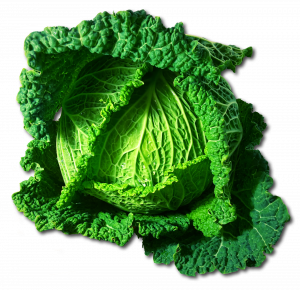kabage

Cabbage itself comes in many forms — the shapes can be flat, conical, the heads compact or loose, and the leaves curly or plain. It is difficult to trace the exact history of cabbage, but it was most likely domesticated somewhere in Europe before 1000 BC, although savoys were not developed until the 16th century. By the Middle Ages, it had become a prominent part of European cuisine. Cabbage is a good source of vitamin K, vitamin C and fiber Cabbage is also an excellent source of manganese, vitamin B6, and folate, and a good source of thiamin, riboflavin, calcium, potassium, vitamin A, tryptophan, protein, and magnesium. Cabbage, at least white, are also a very economic as its cheap and compact making it last for many meals.The cabbage family: Brussels sprouts, broccoli, cauliflower and kale
The word cabbage is a derivation of the Old English Kabage, a colloquial term for head or empty head
Encyclopedia of Food and Health
Encyclopedia of Food and Health